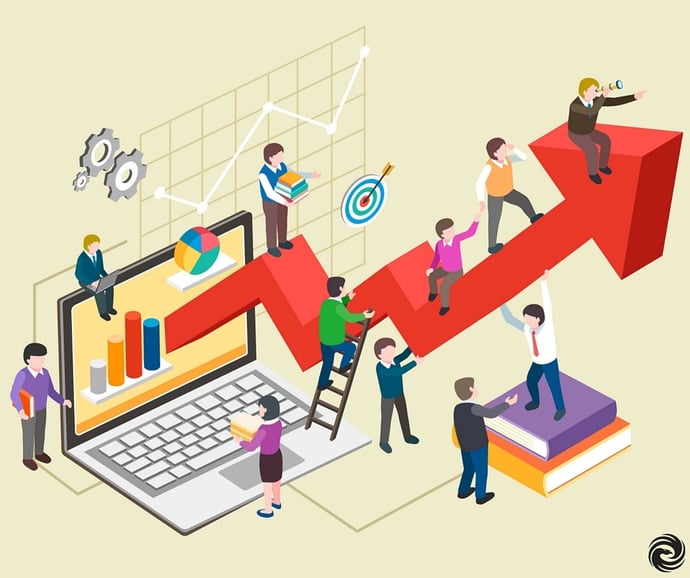Consumerizing Enterprise Software With UX Design

Every day, an exorbitant number of consumer software products are thrown into our tech-abundant society to fight existing players to the death for market share. The sheer quantity of options available to users serves as a natural selection of sorts – only the best and most user-friendly platforms will prevail.
The viability of a new consumer software product depends entirely on widespread user adoption. In a society dense with technological noise and seemingly infinite software options, developers must design a user experience that caters to the consumer’s preferences better than the competition.
But this is not necessarily the case in the realm of enterprise software, which refers to software that helps facilitate organizational processes such as:
- Payment processing
- Customer support
- Internal communication
- Inventory tracking
- Content management
Unlike consumer software, enterprise software platforms usually don’t have to compete for market share because they are often commissioned and developed for a guaranteed audience – sometimes as large as tens of thousands of employees.
Consumer software UX focuses on simplifying and beautifying a user’s interaction with the product. Enterprise software UX should do the same, while also providing the tools necessary to facilitate an organization’s objectives. When designing enterprise software that best meets the client’s goals, designers, developers, and product owners should consider the following points.
Design software with end-users in mind
Particularly in large-scale, highly bureaucratic organizations, the stakeholder who sponsors an internal system is most likely not the end-user. While these high-level stakeholder usually have a valuable perspective of their company’s big-picture needs, they don’t always understand the basic needs of the users who will interact with the software on a daily basis.
The most successful enterprise UX will combine big-picture efficiency with practical functionality. Developers and designers who are unfamiliar with an organization’s routine processes would highly benefit from investigating the needs of the software’s end-users. Employee surveys provide great insight.
Leave room for adaptability
Commissioning and implementing new enterprise software is no small endeavor. For most companies, the budget allows for this kind of restructuring only once in a blue moon. This means that CIOs look for software solutions that are flexible and scalable in anticipation of changes to company procedures and size. Be sure to design a platform that can keep up in the long-haul by adapting to the client's evolving needs.
Don’t compromise design for functionality
People have become accustomed to the streamlined user experiences of their favorite consumer apps. They’re no longer willing to trade that simplicity for a clunky UX that is characteristic of traditional enterprise software. Employees now expect the same seamlessness in their work tools. Establish a competitive advantage over larger, conventional enterprise software providers by designing a sleek, intuitive user experience.
Designers and developers shouldn’t let bureaucratic hurdles and explicit demands scare them away from the world of enterprise software development. So long as expectations are made clear and an open, communicative design process is established, crafting a delightful and functional enterprise software UX can be a rewarding challenge.

